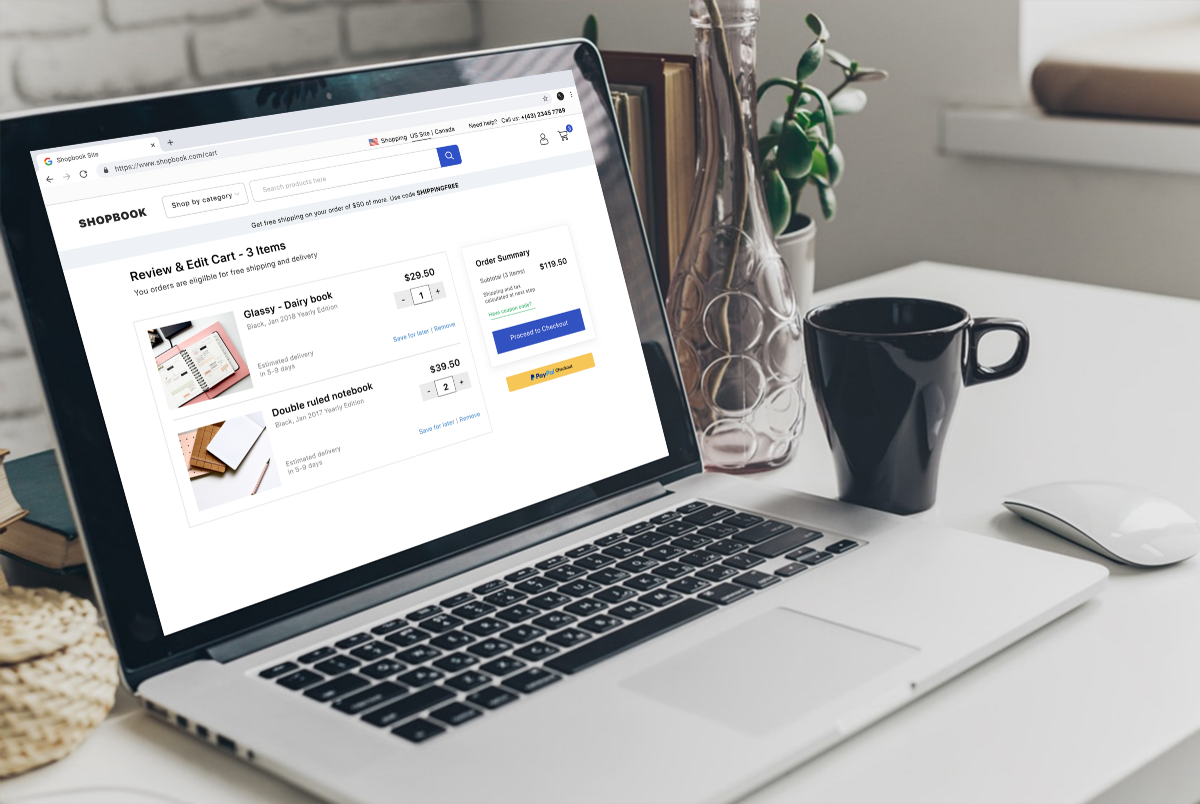
The convenience of online payment has given a tremendous push to the E-commerce industry. It helped boost sales, especially in the pandemic era when offline stores were forced to shut down temporarily.
Online cart abandonment is a huge pain point for leading online retailers. However, maintaining the volume of sales remains a concern for even the most prominent eCommerce players. After all, they cannot compare to the satisfaction that offline shopping provides. The customers get to take the product home immediately after making the purchase and don’t have to wait for it to deliver.
Online payment gateways can help bridge this gap and ensure that the customers get a satisfactory shopping experience. Octane Research on Marketing research in India depicts that Indian marketers have reported 51% of cart abandonment. The root cause of this is an inefficient payment portal that can hamper the checkout process for the customer.
What’s the solution?
The comfort of online shopping without having to step out gives an edge to eCommerce retailers. However, businesses must also ensure that the payment process is as simple, quick, and convenient as possible to make transactions as easy as child’s play. There must be seamless prompts on the checkout page that push the user to complete the payment.
The best solution is to enable a smooth checkout flow. Whether with minimal payment steps, one-click payments with payment links, or zero distractions at the checkout page- merchants have to mandatorily make sure that they enforce all possible means to upgrade their checkout process. This can combat cart abandonment behavior to a large extent.
But what is the checkout process that many merchants use?
What is an E-commerce Checkout process?
In an offline store, customers add the needful products in the shopping trolley or avail the desired service, say, a haircut. The payment is made at the Point of Sale (PoS) at the billing counter.
The eCommerce checkout process is the same but online.
In E-commerce, the checkout process includes all those steps that enable completing the sale once the customer on the portal adds the products in the digital cart and routes to purchase by payment.
It includes :
Adding products to the online shopping cart
Choosing the mode of payment
Entering billing details to complete payment
Entering shipping address
Order preview
Successful transaction completing the purchase
Top 8 ways to improve the E-commerce checkout process
Here are the top 8 ways merchants can improve their eCommerce checkout process to boost sales and minimize cart abandonment.
Using an integrated Payment Gateway
The quality of an E-commerce checkout flow is evaluated by its online payment gateway. The right payment gateway will act as a partner and ensure that there aren’t any glitches in the checkout process. A convenient, smooth, and fast navigation facilitated by a payment gateway will provide no speed breakers in the checkout process.
Businesses need to choose the right Payment Service Provider (PSP) that provides their customers with the most diverse payment modes to choose from. The choices may include debit cards, credit cards, EMI, net banking, QR code, payment links, mobile wallets, and UPI.
Simple checkout process
A smooth and easy-going checkout process ensures that making the payment does not seem like a chore. This can be on account of a soft and straightforward checkout design. The steps to make the payment have to be quick, easy to navigate through, and seamless.
Choice of colors, fonts, spatial management, and minimal distractions make the checkout process even smoother.
Customize the checkout process
Call to action (CTAs) must be well-positioned throughout the checkout page to direct the customer towards the next step. Simple prompts like ‘select payment mode,’ ‘view cart,’ ‘modify cart,’ ‘add delivery address’ make the checkout process less confusing.
Merchants can also save some products in the cart for the future (‘save for later). This makes shopping sensible for thousands of customers who may purchase a few products and save some of them for later.
Adding product suggestions (‘also you may like’) right at the bottom of the payment page adds to check the quality. This can act in the merchant’s favor and increase sales.
Information flow
All the purchase information for the customer has to be clear-cut and as specific as possible, right from product descriptions, pictures, ribbons, cart overview, extra charges to tracking, discounts, terms and conditions, reviews, and refund policy.
Any alerts that customers must know, like shipping charges or free delivery, have to be furnished beforehand. Information flow has a direct impact on the checkout experience.
Security, Credibility, and Reliability
It’s important to assure customers that all payments on the eCommerce site are safe and secure. Security compliances like PCI-DSS, privacy policy, Secure Socket Layer (SSL), HTTP (Secured website), trusted online payment gateway, and encryption details must be mentioned briefly at the checkout page to enhance the customer’s trust and induce sales.
This would instinctively improve customer confidence levels and make them feel safe in trusting the site, products, payments, and purchase decisions.
Login credentials and forms
An important checkout feature in E-commerce is the credentials that customers need to furnish for creating an account, later for shipping and delivery. This includes contact number, email, address, alternative contact, etcetera. A lot of fields may cause frustration.
Autofill options can make this process easy and smooth.
In addition, guest checkouts are better than asking the customer to first create a profile for the checkout. Once the purchase is made by guest login, customers can be given a choice to create an account after the checkout. Making profiles mandatory translates into more steps- this can change the customer’s mind about making the payment altogether.
Sales promotions
Pricing strategies and promotion techniques have a significant impact on customers’ behavior in E-commerce. With stiff competition between brands online, sales promotions such as cashback, reward points, discounts, offers in the checkout process lure the customers.
Compatibility with devices
The checkout process must be smooth irrespective of what device the customer uses to make the purchase. Hence, compatibility with all devices like smartphones (Android and iOs), laptops, and tablets must be ensured.
Conclusion
Checkout is what completes a sale for an E-commerce business. It’s the last step in converting a potential deal into a purchase. Hence, it is essential to partner with a Payment Service Provider that provides checkout features that make this process optimal. Zaakpay provides an online payment gateway and payment links that are cost-effective, easily integrated with E-commerce sites, and highly secure, improving the checkout experience for businesses and customers.
For more visit the article on this website.





